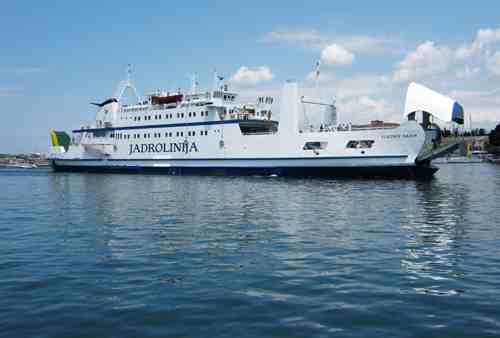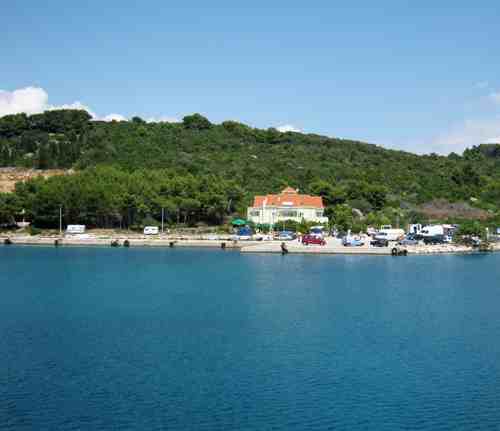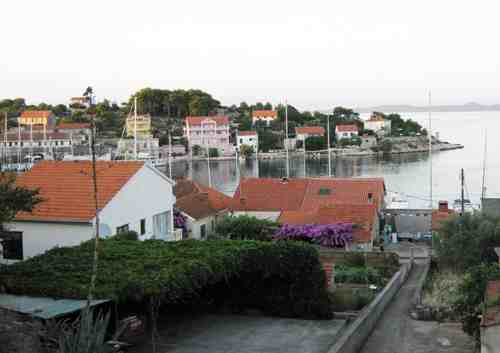After being the Anglican Chaplain in Prague for just over nine months, I’ve finally taken a proper holiday (vacation to the American readers of this blog) as, having celebrated the Eucharist on the morning of Sunday 5th July I am not officiating at Sunday worship again in Prague until Sunday 26th July. This is the reason why I haven’t posted anything on this blog since the end of June until today.
I wrote a number of blog posts whilst we were away in the hope of being able to post them from where we were staying. But the facilities and opportunity to do this never materialised so instead I will be posting them over the next few days now I’m back in Prague.
We decided to have a completely unplanned holiday with absolutely nothing booked in advance. The only thing we decided was to travel in the car to Croatia and spend some time relaxing on one of the numerous islands that lie parallel to the Dalmatian coast. Therefore, having written those last few emails, tried to remember to pack everything we might need, unloaded the dishwasher for the last time and put out the recycling and rubbish, just before 5pm on Sunday 5th July, we finally set out.
The aim of our drive that Sunday evening was to at least leave the Czech Republic and reach somewhere in Austria. Leaving the flat in Prague as late as 5pm meant we would not get as far into Austria as I’d originally envisioned. However, there was remarkably little traffic about and we reached Ceské Budejovice in an hour and fifty minutes, ten minutes quicker than when I’d driven there the once previously. Beyond Ceské Budejovice, we entered territory that was totally new to both of us. And as we did so, we had two experiences which we were really not expecting.
After travelling on from Ceské Budejovice for about half an hour, we were within two or three km of the Austrian border when we saw a woman standing at the side of the road. She had bleached blonde hair and was wearing an exceedingly short skirt, together with a bra top that left a large amount of midriff on view. I remarked to Sybille that there was bit too much flesh on show & she agreed. Then, within a hundred metres there was another young woman in a short halter neck sun dress followed by a third in a short frilly miniskirt and a very cropped crop top. It was only when we saw the third young woman that we both realised what we were seeing. All three were prostitutes openly touting for business. Slightly further on, on the other side of the road, we saw at least four more.
Whilst the fall of the Iron Curtain twenty years ago, has undoubtedly brought massive change for the better in the lives of the bulk of the population of the former communist counties of Central & Eastern Europe, some changes have been for the worse. In particular, laws in relation to gambling in the Czech Republic are now either lax or almost non-existent. When travelling along the Nürnberg – Prague motorway, I had seen signs to casinos, strategically located just inside the Czech Republic, enticing Germans to cross the border and gamble, freed from the strict regulation of gambling in their own country. And here on the Czech – Austrian border it was the same as I observed several hotel-casinos just before we left the Czech Republic and entered Austria. And with gambling has come prostitution.
What we observed was the bottom end of the market. No doubt, the ‘higher class girls’ work out of the hotels. Whereas police seem to be everywhere in Prague, here they were noticeable by their absence. I am well aware that there are complex issues, both legal and moral, in relation to prostitution and gambling which I’m not going to try and address in this blog post. But that evening, I saw something I had never seen before in my life and certainly something neither of us had expected to see on our journey from the Czech Republic to Austria.
On entering Austria, we decided to make for Freistadt, the first town of note on our route. Freistadt has a well preserved mediaeval town centre, surrounded by much of the original walls and is very picturesque. We found a reasonably priced room in a pension situated in the heart of the mediaeval centre and then found place to eat. But as we explored the town after our meal, we had our second experience that we were not expecting. Here, on a sunny Sunday evening in July, in a picturesque town in Oberösterreich, there was hardly a soul to be seen. And as we looked more closely at the shops and businesses, we noticed that many were having closing down sales or had already closed down and were for sale. There were no longer tourists visiting the town in their usual numbers and therefore little business for the shops. We also discovered that there were only two other people staying overnight in our pension.
Living in Prague, we have not really experienced the worldwide economic downturn as such. Czech banks have not overextended themselves with dodgy loans and the like and therefore the effects tend to be secondary with fewer tourists visiting the city and more hotel rooms free. But there are still plenty of tourists about. However, in Freistadt in Oberösterreich, the full effects of the current economic crisis were manifest in a manner that neither of us was expecting to see.
I must apologise that unusually, this blog post is not accompanied by a photo. For obvious reasons, I didn’t take any pictures of the ladies at the side of the road! And for reasons I cannot explain, neither of us took any photos of Freistadt.






